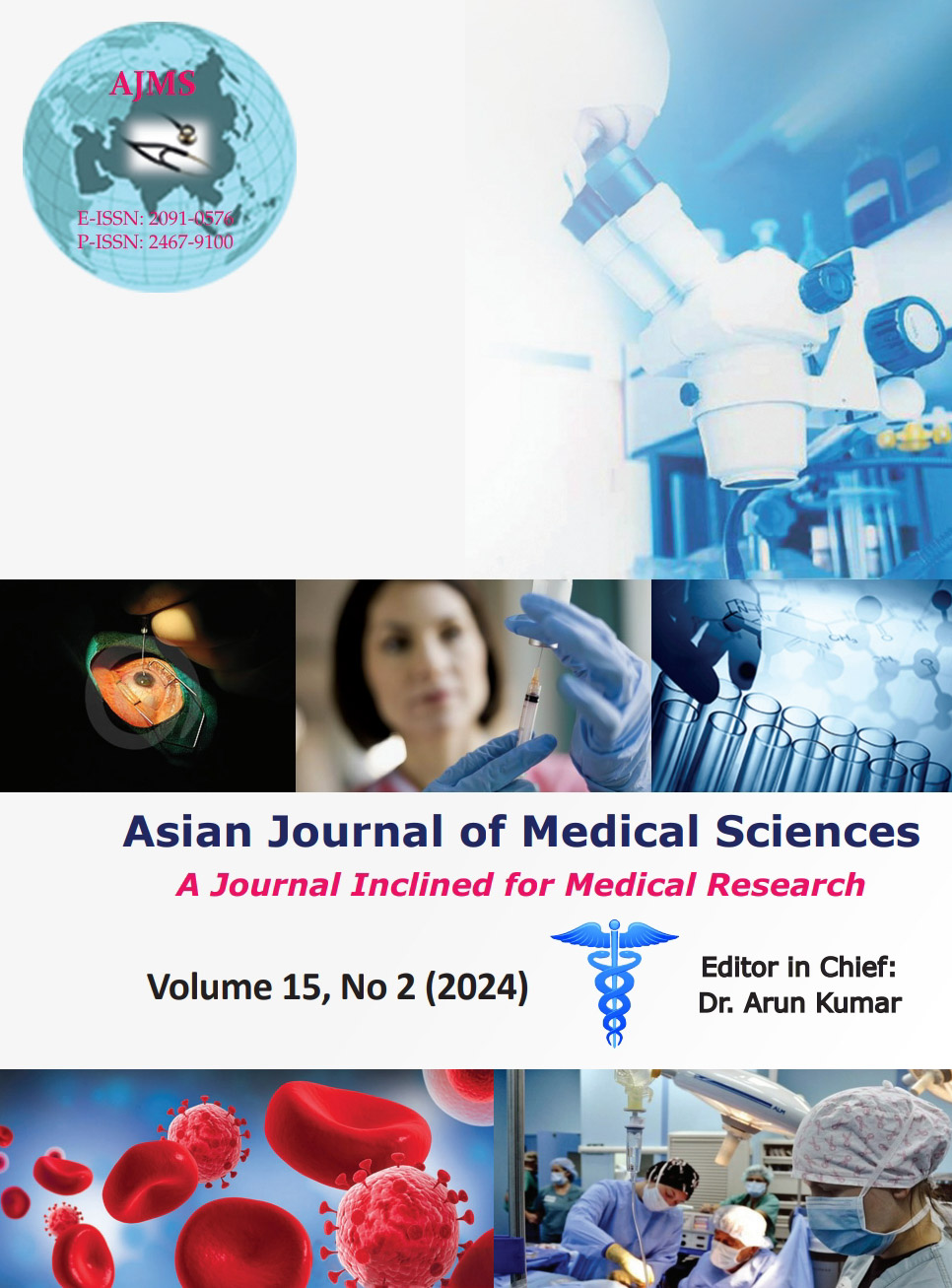Immunohistochemical expression of p53, beta-catenin, and PD-L1 in colorectal carcinoma with respect to grade and stage-an observational study in a tertiary care center
Keywords:
Beta-catenin; Histologic grade; p53; Programmed death ligand 1; StageAbstract
Background: Colorectal cancer (CRC) has consistently shown a global rise in incidence. p53 exerts regulatory function in signaling processes, with the p53 mutation accelerating the late stage of colorectal carcinogenesis. Programmed death ligand 1 (PD-L1) is an immune checkpoint regulator whose role in targeted therapy of CRCs needs to be evaluated. Beta-catenin plays a fundamental role in cell adhesion, with long-term effects on disease progression and survival. A detailed evaluation of all these factors is essential to tailoring new therapeutic approaches in advanced-stage cases.
Aims and Objectives: To study the immunohistochemical (IHC) expression of p53, PD-L1, and beta-catenin in different histologic grades and stages of colorectal carcinomas.
Materials and Methods: A total of 29 cases of segmental colectomy were included in the study population. Tumor sections were sent for IHC study of p53, PD-L1, and beta-catenin and interpreted as per standard protocol. Findings were tabulated against the histologic grade and stages of CRCs. Statistical analysis was done using SPSS 25.0 to test for statistical significance at P<0.05.
Results: The study population predominantly consisted of males (66%), mainly in the age group of 46–60 years. p53 was significantly more expressed in left colonic tumors. PD-L1 expression was also significantly associated with histologic grade and nodal metastasis. High beta-catenin expression was seen in well-differentiated adenocarcinomas and lower T and N-stage disease. Positive p53 also correlated with positive PD-L1 expression. However, expression of p53 was also high in tumors with low beta-catenin expression.
Conclusion: p53, PD-L1, and beta-catenin may have a role in prognostication and predicting long-term survival outcomes in CRC cases. These may also act as potential therapeutic targets with a more detailed evaluation and a larger sample size of CRC cases.
Downloads
Downloads
Published
How to Cite
Issue
Section
License
Copyright (c) 2023 Asian Journal of Medical Sciences

This work is licensed under a Creative Commons Attribution-NonCommercial 4.0 International License.
Authors who publish with this journal agree to the following terms:
- The journal holds copyright and publishes the work under a Creative Commons CC-BY-NC license that permits use, distribution and reprduction in any medium, provided the original work is properly cited and is not used for commercial purposes. The journal should be recognised as the original publisher of this work.
- Authors are able to enter into separate, additional contractual arrangements for the non-exclusive distribution of the journal's published version of the work (e.g., post it to an institutional repository or publish it in a book), with an acknowledgement of its initial publication in this journal.
- Authors are permitted and encouraged to post their work online (e.g., in institutional repositories or on their website) prior to and during the submission process, as it can lead to productive exchanges, as well as earlier and greater citation of published work (See The Effect of Open Access).




